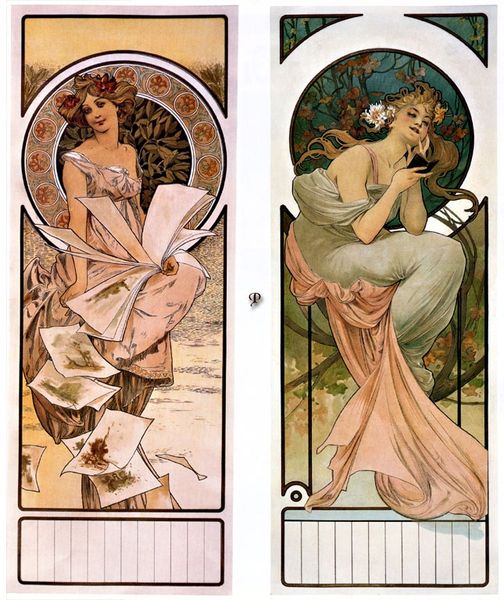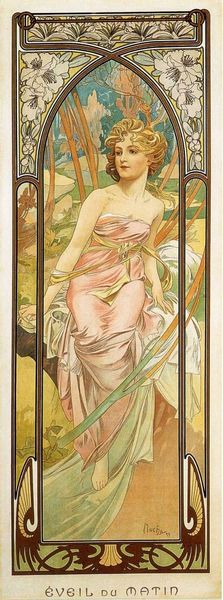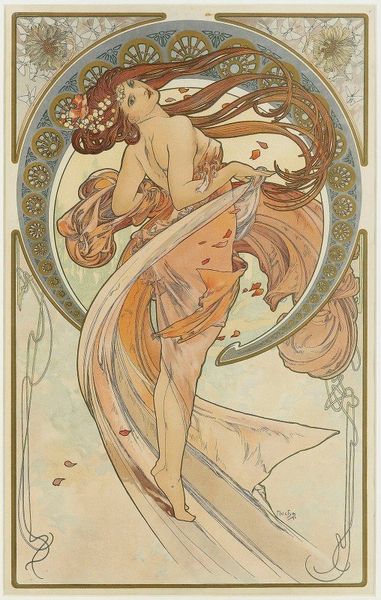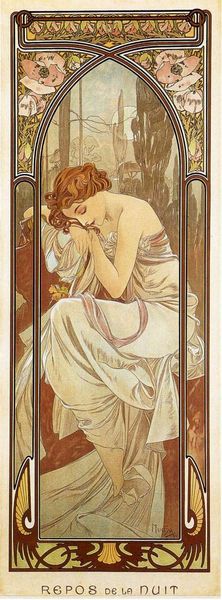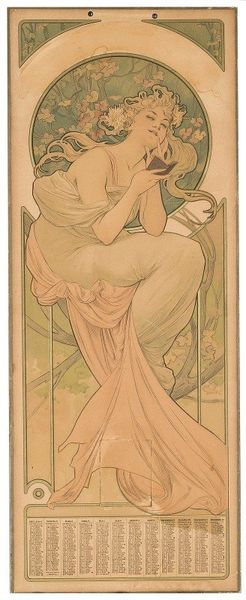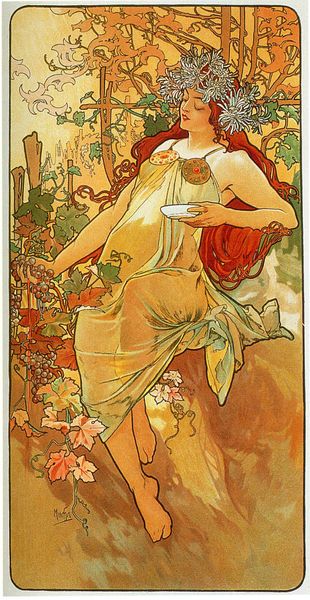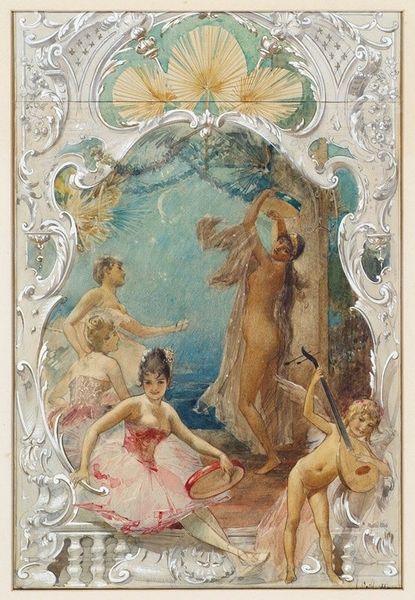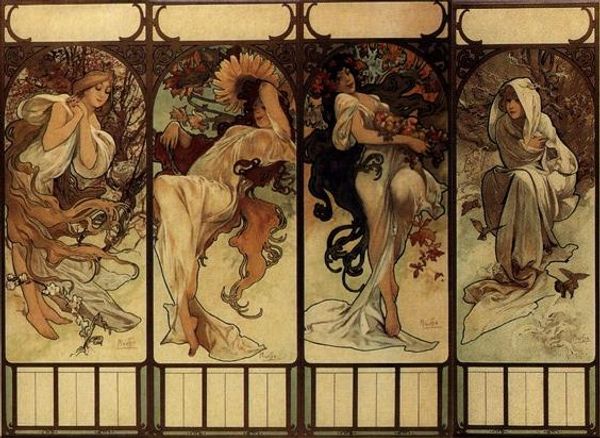
painting, watercolor, poster
#
portrait
#
art-nouveau
#
painting
#
figuration
#
watercolor
#
art nouveau
#
watercolour illustration
#
decorative-art
#
poster
Copyright: Public domain
Curator: Looking at this “Calendar of cherry blossom,” made in 1898 by Alphonse Mucha, what immediately captures your attention? Editor: It's strikingly romantic, even ethereal. The languid poses of the figures, the muted palette—it's the epitome of fin-de-siècle dreaminess. I wonder about the implications of associating women so explicitly with nature and ephemerality within a patriarchal structure. Curator: That’s a valuable insight. Mucha, of course, was a prominent figure in the Art Nouveau movement, and this poster, rendered in watercolor, is characteristic of his style: the stylized floral motifs, the decorative borders, the idealized female figures, everything about the image suggests feminine grace, harmony with nature, a deliberate engagement with beauty. And this was not simply art for art’s sake, but an example of a commercial art—made to advertise. Editor: Precisely! It is not divorced from a certain degree of cultural control and expectations that limit women. The question becomes: how can we enjoy this gorgeous aesthetic while maintaining a critical consciousness towards its inherent ideologies. Also, this piece suggests that there may be multiple tiers of female existence. What separates the figure at the top from the one at the bottom? Curator: The two are meant to echo each other across seasonal change. Above, she is framed by an abundance of blossoms; below, by cherry fruits, the full promise of spring realized. However, what you bring to my attention are issues about control. Think about the commodification of women’s beauty, of the idea of nature being harnessed for a product... In essence, Mucha, working within a capitalist system, needed to depict women and nature as something that can be owned or possessed. It reinforces the male gaze. Editor: And that, of course, resonates beyond the piece itself, it’s a conversation about visibility and agency in the art world at large. The way these women are depicted speaks volumes about broader societal power dynamics, particularly when it's a calendar. Time, work, days are all mapped out, but we’re still not seeing images about how to change things or even see real, existing women. It feels inherently exploitative. Curator: These types of visual statements are always very powerful. Thank you, I feel much better equipped now to talk about the deeper meanings. Editor: Indeed, it's always worthwhile to push ourselves beyond the surface, into the thornier realities beneath.
Comments
No comments
Be the first to comment and join the conversation on the ultimate creative platform.
